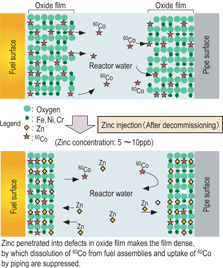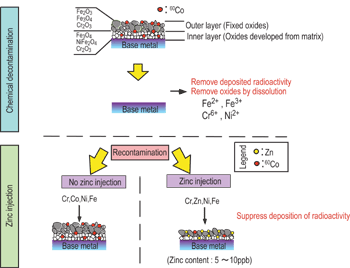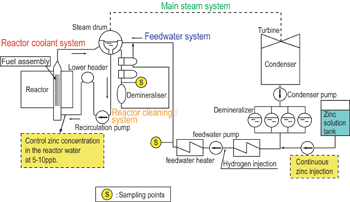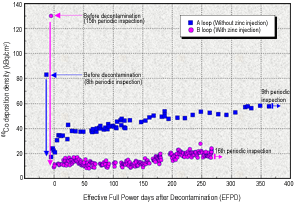The HOP method was employed at the 15th (1999) and 16th (2000) periodical inspections, and dramatically reduced the dose rate of the equipment and piping, demonstrating its effectiveness and advantages.
Chemical decontamination can be expected to be remarkably effective; however, it has been found that crud would pile up again on the equipment and piping surfaces after decontamination and that its benefit has been reduced rapidly along with the reactor operation. For Fugen, zinc injection was a noteworthy technique that could control this phenomenon. When zinc ions exist in the coolant, they are selectively attracted to the oxide film on the surface of equipment and piping, where they suppress sticking and piling up on piping of radionuclide, such as 60Co. Fugen started working on development of zinc injection in 1988, and carried out the following pre-operational tests repeatedly for its practical use: verification tests for inhibition effectiveness of radionuclide-adhesion, integrity verification tests for the structural materials under zinc injected water, and consequence tests on the plant by short-term zinc injection. Zinc injection, in combination with chemical decontamination, was taken as a permanent measure for reducing exposure at Fugen. Full-scale zinc injection was commenced from the beginning of operation cycle after the 15th periodical inspection at which chemical decontamination was applied. Zinc injection was totally proved its effects as a very useful technology.
|



